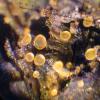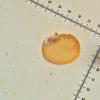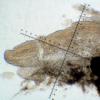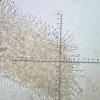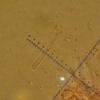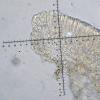
15-12-2025 21:11
 Hardware Tony
Hardware Tony
Small clavate hairs, negative croziers and IKI bb

15-12-2025 07:09
 Danny Newman
Danny Newman
indet. Rutstroemiaceae sp. on unk. fallen leavesMc

15-12-2025 15:54
 Johan Boonefaes
Johan Boonefaes
Unknown anamorph found on the ground in coastal sa

15-12-2025 15:48
 Danny Newman
Danny Newman
Melanospora cf. lagenaria on old, rotting, fallen

15-12-2025 07:05
 Danny Newman
Danny Newman
Pseudosclerococcum golindoi (det: Zotto)near Cosb

15-12-2025 11:49
 Danny Newman
Danny Newman
ITS sequences from the following two collections B

15-12-2025 12:34
 Danny Newman
Danny Newman
indet. Rhytismataceae on oak leafnear Purchase Roa

09-12-2025 12:06
 Andgelo Mombert
Andgelo Mombert
Bonjour,Je recherche l'article concernant Hypobryo
Orbilia auricolor - curvatispora
Martin Bemmann,
06-04-2009 00:05
 Hello forum,
Hello forum,I am dealing since a week with a collection of Orbilias, that I would consider to be at least close to O. auricolor. While checking the (poor) book collection of mine and the internet I found out that some take O. curvatispora as a synonyme and others as a separate taxon (cf. Index fungorum).
What is the actual state?
Best regards,
Martin
Hans-Otto Baral,
06-04-2009 17:08

Re:Orbilia auricolor - curvatispora
Hi Martin
Index Fungorum contains a lot of errors. Actually, O. curvatispora is a synonym of O. auricolor (but the name auricolor has erroneously been applied bevore 1987 for Hyalorbilia inflatula!). Important is to study the margin in median section, also to look for conidia (Arthrobotrys, Dactylella), to identify the species. Do you have any images?
Zotto
Index Fungorum contains a lot of errors. Actually, O. curvatispora is a synonym of O. auricolor (but the name auricolor has erroneously been applied bevore 1987 for Hyalorbilia inflatula!). Important is to study the margin in median section, also to look for conidia (Arthrobotrys, Dactylella), to identify the species. Do you have any images?
Zotto
Martin Bemmann,
06-04-2009 23:19

Re:Orbilia auricolor - curvatispora
Hello Zotto,
Thank you for your clarification. Yes, I have some poore pictures. I find it very hard to document this fungus. Everything is so tiny, the spores so slim that they steadily swimm around. I could not catch them with the camera yet. What I saw is that hey are C-shaped, bulged at one end and with a blue shining "oil?"drop in that end.
The cluster of fruitbodies is growing on a dead decorticated twig of sambuccus(?, it is hollow on full lenght) in the cavity of a broken-off side twig:
Thank you for your clarification. Yes, I have some poore pictures. I find it very hard to document this fungus. Everything is so tiny, the spores so slim that they steadily swimm around. I could not catch them with the camera yet. What I saw is that hey are C-shaped, bulged at one end and with a blue shining "oil?"drop in that end.
The cluster of fruitbodies is growing on a dead decorticated twig of sambuccus(?, it is hollow on full lenght) in the cavity of a broken-off side twig:
Martin Bemmann,
06-04-2009 23:25
Hans-Otto Baral,
06-04-2009 23:41

Re:Orbilia auricolor - curvatispora
Hi Martin
your fungus looks very much like O. auricolor. The margin should be more resolved (to see the single cells). Spore sitze should be around 8-12 x 1.2 µm. Did you use oil immersion? The problem with floating spores is difficult, but drawing floating spores can be even more difficult than photographing.
The minute drop at the broader end is the spore body (no oil drop! because it disappears in KOH). I attach photos of spores and on the right the conidia of the Arthrobotrys anamorph.
Zotto
your fungus looks very much like O. auricolor. The margin should be more resolved (to see the single cells). Spore sitze should be around 8-12 x 1.2 µm. Did you use oil immersion? The problem with floating spores is difficult, but drawing floating spores can be even more difficult than photographing.
The minute drop at the broader end is the spore body (no oil drop! because it disappears in KOH). I attach photos of spores and on the right the conidia of the Arthrobotrys anamorph.
Zotto
Martin Bemmann,
07-04-2009 00:04

Re:Orbilia auricolor - curvatispora
Thank you Zotto!
This is exactly how the spores I saw looked alike! Yes, I used oil, but my preparations (oh, so many...) are maybe still too thick. I am examining mushrooms with the microscope not much more than half a year, so please be patient. I will do better... ;-)
I don't have a picture of the outer excipulum but one of the crushed preparations is showing the textura:
Best regards,
Martin
This is exactly how the spores I saw looked alike! Yes, I used oil, but my preparations (oh, so many...) are maybe still too thick. I am examining mushrooms with the microscope not much more than half a year, so please be patient. I will do better... ;-)
I don't have a picture of the outer excipulum but one of the crushed preparations is showing the textura:
Best regards,
Martin
Hans-Otto Baral,
07-04-2009 00:33

Re:Orbilia auricolor - curvatispora
o.k., but this is the usual texture in Orbilia. Differences among the species occur at the margin. I assume you have a bino and use razor blades for freehand sections? Sections must not be very thin, only they may not be squashed then you see the important details.
In the attach you see what I mean.
Zotto
In the attach you see what I mean.
Zotto
Martin Bemmann,
07-04-2009 23:58
Martin Bemmann,
07-04-2009 23:59
Hans-Otto Baral,
08-04-2009 09:37

Re:Orbilia auricolor - curvatispora
yes, your images exclude Orbilia smabuci/fimicoloides, so I agree it is O. auricolor.
Zotto
Zotto
Martin Bemmann,
08-04-2009 10:16

Re:Orbilia auricolor - curvatispora
Thank you very much!
And have a nice day.
Martin
And have a nice day.
Martin
